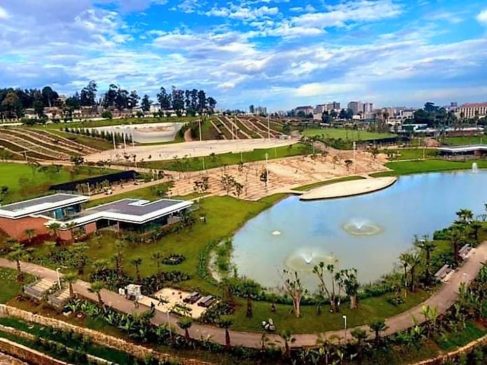A different kind of tourism!
By Leyou Tameru

I am not a big drinker, but if I were to choose an alcoholic drink I almost always go for wine. I’ve never really understood the processes that are involved in wine making, but somehow I have always assimilated it to tej, Ethiopian honey wine. It’s not that I think that tej is made the same exact way; I just equated these two alcoholic drinks as cultural equivalents. With this in mind, I took a trip to wine country in California, most famously known as Napa Valley.
Napa Valley is a fairly large region in California that has hundreds of wineries that have existed since the early 19th century. The wines that come from this region are famous because the weather is conducive to growing grapes. You can find bottles for as little as 5 dollars at prices I wouldn’t even dare mentioning. Making great wine is one way these wineries make money, but there is another industry that is benefiting from wineries. What is it? Tourism!
Everyday, wineries open their doors and allow tourists to experience wine making as well as taste the different kinds of wines that are made. One can go from winery to winery and indulge in the different reds, whites, roses and sparkling wines one can afford.
Although it may be a fun activity for amateurs, wine tasting is serious business. There are many factors that make a wine great, the grape, the age, the aging method, the mixing,… etc. As impressed as I was by the subtle differences that make one wine better than the other, I was even more impressed by the grandiosity of the tourism that revolved around wine tasting. The scenery is beautiful making the drive very pleasant, the wineries are organized and ready to walk the tourists through the process and last but not least they all have a little store of souvenirs so that you can buy something to remind you of your trip. The people who take the tour aren’t wine connoisseurs but average wine drinkers, like myself, who were just curious.
So why do we not do this at home, in Ethiopia? Why do we not respect the processes of making our traditional foods and drinks enough to want to teach and show others? What the wine tour made me realize is that, it’s not so much about the process of wine making being so amazing, it’s that the process is respected and recognized enough to be taught to others. So my question now is, do we respect our culinary art? Our tej, tella and araqe making? Do we not recognize our lifestyle enough to understand that we have something to teach others?
I recently met an Ethiopian food enthusiast who has never stepped foot in the country but has been taken aback by the culture so much that he has his own tej label. Yes, he makes his own Ethiopian honey wine. I was flattered to hear that my culture was appreciated by others, but I am ashamed to admit that we are not as proud and appreciative of our culture.
If we examine tourism in Ethiopia, it primarily consists of historic buildings, churches, mosques and other religious edifices. In the south of the country, the tour mainly focuses on “people watching,†where one tours the people and their way of living. But what lacks is the teaching and educating of our processes such as, a tour of our textile industry, a culinary tour, a drink making tour… etc.
What I’ve learned from all of this touring is that one can create a tourism industry on many things. I’ve also learned that our understanding of what tourism is and can be should be changed to more than just visiting actual buildings and existing physical plants. We can and should attract tourism based off of our stories, the stories we tell people, the things that we do everyday which make us unique. There is so much the world doesn’t know about us, we should let it be known, for a nominal fee of course!
Source: thereporterethiopia.com



